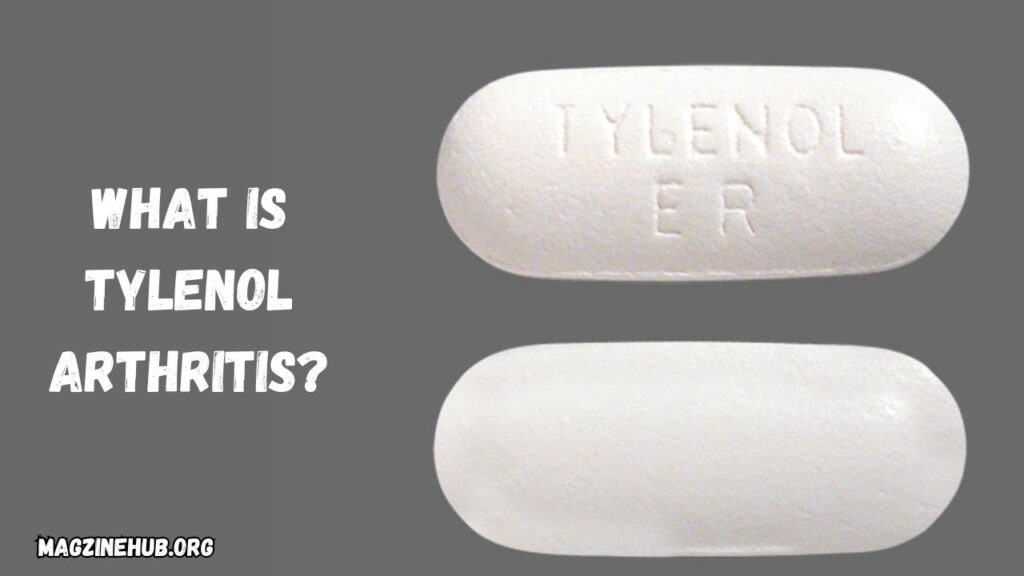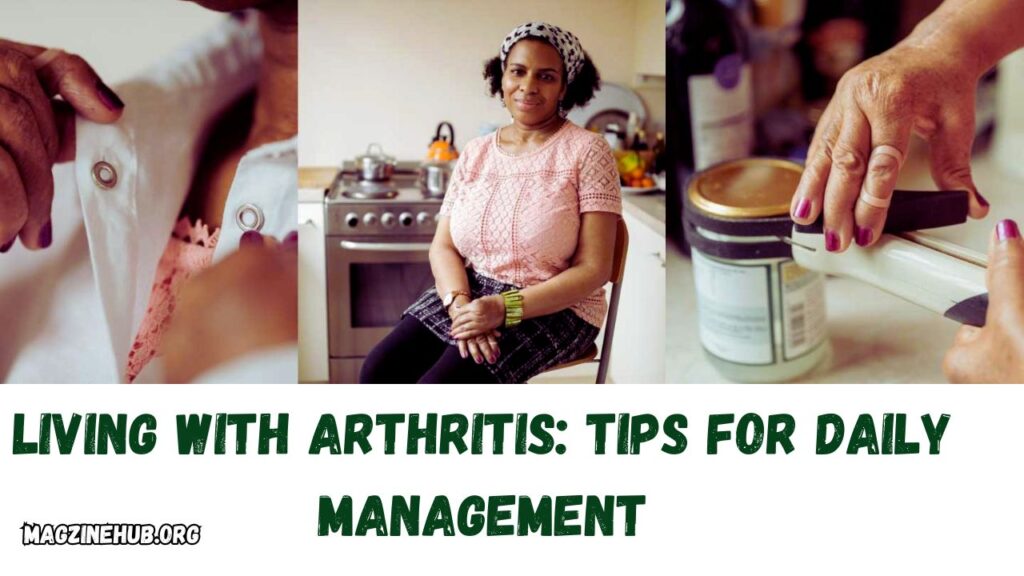Discover the key differences between Tylenol and Tylenol Arthritis. Learn which is best for your pain relief needs and how they work to manage symptoms effectively.
Table of Contents
What You Need to Know About Tylenol Arthritis: A Comprehensive Guide
Introduction
Arthritis is a debilitating condition affecting millions of people worldwide. It can severely impact daily life, causing pain, stiffness, and a loss of mobility. Among the various treatments available, Tylenol Arthritis has become a popular choice due to its effectiveness and ease of access. This over-the-counter (OTC) medication promises relief from the constant pain associated with arthritis, allowing sufferers to lead a more comfortable life.
But what exactly is Tylenol Arthritis? How does it work, and what are the risks involved? This comprehensive guide will answer all your questions, offering a detailed look into the ingredients, mechanism of action, side effects, and best practices for using Tylenol Arthritis. We’ll also explore alternative treatments and provide expert insights to help you make informed decisions about managing arthritis pain.
Understanding Arthritis
Before diving into the specifics of Tylenol Arthritis, it’s essential to understand the condition it aims to treat. Arthritis is not a single disease but a term encompassing over 100 different types of joint disorders. The most common forms are osteoarthritis (OA) and rheumatoid arthritis (RA).
Osteoarthritis (OA)
Osteoarthritis, the most prevalent form of arthritis, is often referred to as “wear and tear” arthritis. It occurs when the cartilage that cushions the ends of bones in your joints gradually deteriorates. This wear and tear lead to pain, swelling, and difficulty moving the joint.
Symptoms of Osteoarthritis:
- Joint pain during or after movement
- Stiffness, especially after waking up or after periods of inactivity
- Tenderness when applying light pressure on the joint
- Loss of flexibility and range of motion
- Grating sensation or popping/cracking sound in the joints
- Bone spurs, which are extra bits of bone that form around the affected joint
Rheumatoid Arthritis (RA)
Rheumatoid arthritis, on the other hand, is an autoimmune disorder. In RA, the immune system mistakenly attacks the lining of the joints, causing inflammation and pain. Over time, this can lead to joint deformity and erosion of the bones within the joint.
Symptoms of Rheumatoid Arthritis:
- Tender, warm, swollen joints
- Joint stiffness that is usually worse in the mornings and after inactivity
- Fatigue, fever, and loss of appetite
- Symmetrical symptoms affecting both sides of the body
Other Types of Arthritis
While OA and RA are the most common, there are many other types of arthritis, including:
- Gout: Caused by the buildup of uric acid crystals in the joint, leading to sudden and severe pain.
- Psoriatic Arthritis: A form of arthritis affecting some people with psoriasis.
- Ankylosing Spondylitis: A type of arthritis that primarily affects the spine, leading to severe, chronic pain and discomfort.
What is Tylenol Arthritis?

Tylenol Arthritis is a specialized formulation of acetaminophen, designed to provide long-lasting relief from the pain associated with arthritis. It is available as an over-the-counter medication, making it accessible to many individuals seeking to manage their arthritis symptoms without a prescription.
Acetaminophen: The Active Ingredient
The primary active ingredient in Tylenol Arthritis is acetaminophen, also known as paracetamol in some countries. Acetaminophen is a well-known pain reliever and fever reducer, used in many OTC medications.
How Does Acetaminophen Work?
Acetaminophen works by blocking the production of prostaglandins, chemicals in the body that cause inflammation and pain. Unlike non-steroidal anti-inflammatory drugs (NSAIDs) like ibuprofen, acetaminophen does not reduce inflammation but focuses on alleviating pain and reducing fever.
Unique Features of Tylenol Arthritis
Tylenol Arthritis is not just regular acetaminophen. It has been specifically formulated to address the needs of arthritis patients. Here’s what makes it unique:
- Dual-Layer Caplet: Tylenol Arthritis comes in a dual-layer caplet. The first layer dissolves quickly to provide fast pain relief, while the second layer releases slowly to extend relief for up to eight hours.
- Extended Release: The extended-release formula is particularly beneficial for those suffering from chronic pain, as it reduces the frequency of doses needed throughout the day.
- High Dosage: Each caplet contains 650 mg of acetaminophen, higher than the standard 325 mg found in regular Tylenol. This higher dosage is necessary to provide the long-lasting effects required for arthritis pain relief.
How to Use Tylenol Arthritis
Proper usage of Tylenol Arthritis is crucial to maximizing its benefits and minimizing potential risks. Here’s a detailed guide on how to use this medication safely and effectively.
Dosage Instructions
For adults aged 18 and over, the recommended dosage is two caplets every eight hours. Do not exceed six caplets in 24 hours. It’s important to swallow the caplets whole with water; do not crush, chew, split, or dissolve them, as this can affect the extended-release mechanism.
Dosage Tips:
- Take the medication at regular intervals to maintain consistent pain relief.
- Do not exceed the recommended dosage, as this can lead to serious side effects, including liver damage.
- If you miss a dose, take it as soon as you remember, but do not double up to make up for a missed dose.
Who Should Not Take Tylenol Arthritis
While Tylenol Arthritis is generally safe for most adults, there are certain groups of people who should avoid using it or consult their healthcare provider before starting:
- Individuals with Liver Disease: Acetaminophen is metabolized in the liver, so those with liver conditions should avoid or use it with extreme caution.
- Alcohol Consumers: Regular alcohol consumption can increase the risk of liver damage when taking acetaminophen. Avoid drinking alcohol while using Tylenol Arthritis.
- Pregnant or Breastfeeding Women: Consult your healthcare provider before using Tylenol Arthritis if you are pregnant or breastfeeding.
- People with Allergies: Do not take Tylenol Arthritis if you are allergic to acetaminophen or any of the inactive ingredients listed on the package.
Possible Side Effects
Like all medications, Tylenol Arthritis can cause side effects, although not everyone will experience them. It’s important to be aware of the potential side effects and know when to seek medical attention.
Common Side Effects:
- Dry Mouth: To manage dry mouth, drink plenty of water and avoid alcohol-based mouthwashes.
- Constipation: Increase your intake of fluids and fiber-rich foods to alleviate constipation.
- Nausea: Rest, drink clear fluids, and avoid strong odors or flavors if you experience mild nausea.
- Itchy Skin: Use a moisturizer or antihistamine to reduce itching.
Serious Side Effects:
- Liver Damage: Symptoms include yellowing of the skin or eyes, dark urine, fatigue, and abdominal pain. Seek immediate medical attention if you experience these symptoms.
- Allergic Reactions: Rash, itching, swelling, severe dizziness, and difficulty breathing require immediate medical intervention.
- Bleeding or Bruising: Unusual bleeding or bruising may indicate a serious condition and should be reported to your healthcare provider.
Warnings and Precautions

Tylenol Arthritis, like all medications, comes with specific warnings and precautions to ensure safe usage. It’s vital to follow these guidelines closely to avoid adverse effects.
Liver Damage
Acetaminophen is the leading cause of acute liver failure in the United States. The risk of liver damage increases with higher doses, prolonged use, and concurrent use of alcohol. To minimize this risk:
- Limit Dosage: Stick to the recommended dosage and avoid taking more than 3 grams (3000 mg) of acetaminophen in 24 hours.
- Avoid Alcohol: Do not drink alcohol while taking Tylenol Arthritis, as it significantly increases the risk of liver damage.
- Check Other Medications: Many other medications, including some cold remedies and pain relievers, contain acetaminophen. Ensure you’re not inadvertently taking more than the recommended dose by using multiple acetaminophen-containing products.
Blood Pressure Concerns
A 2022 study published in the journal Circulation found that daily use of acetaminophen can increase blood pressure. If you have high blood pressure or are at risk, discuss this with your healthcare provider before using Tylenol Arthritis.
Drug Interactions
Acetaminophen can interact with certain medications, leading to potentially dangerous effects. Some notable interactions include:
- Warfarin: Acetaminophen can increase the effects of warfarin, a blood thinner, leading to an increased risk of bleeding.
- Other Acetaminophen-Containing Medications: Taking multiple products that contain acetaminophen increases the risk of overdose.
- Alcohol: Concurrent use with alcohol raises the risk of liver damage.
Always inform your healthcare provider of all medications you are taking, including over-the-counter drugs, prescription medications, and supplements.
Comparing Tylenol Arthritis to Other Pain Relievers
When managing arthritis pain, you have several options. How does Tylenol Arthritis compare to other pain relievers on the market? Here’s a breakdown:
NSAIDs (Ibuprofen, Naproxen)
Non-steroidal anti-inflammatory drugs (NSAIDs) like ibuprofen (Advil, Motrin) and naproxen (Aleve) are commonly used to treat arthritis pain. Unlike acetaminophen, NSAIDs reduce inflammation, making them more suitable for inflammatory types of arthritis, such as rheumatoid arthritis.
Pros of NSAIDs:
- Anti-Inflammatory: Effective for reducing swelling and inflammation in the joints.
- Versatile: Available in various forms, including pills, gels, and creams.
- Fast-Acting: Provides quick relief from pain and inflammation.
Cons of NSAIDs:
- Gastrointestinal Issues: Prolonged use can lead to stomach ulcers, bleeding, and other GI issues.
- Kidney Concerns: Can affect kidney function, especially in those with pre-existing kidney conditions.
- Cardiovascular Risks: Long-term use is associated with an increased risk of heart attack and stroke.
Opioids
Opioids are powerful prescription painkillers used for severe arthritis pain. They include medications like oxycodone, hydrocodone, and morphine. While effective, opioids come with significant risks and are generally reserved for severe cases.
Pros of Opioids:
- Effective Pain Relief: Provides significant pain relief for severe arthritis pain.
- Quick Acting: Offers rapid relief, especially when taken as directed.
Cons of Opioids:
- Addiction Risk: High potential for addiction and dependency.
- Side Effects: Includes drowsiness, constipation, nausea, and increased risk of falls and fractures.
- Tolerance: Over time, higher doses may be needed to achieve the same level of pain relief.
Topical Analgesics
Topical analgesics are creams, gels, or patches applied directly to the skin over the painful joint. These include products containing menthol, capsaicin, or NSAIDs.
Pros of Topical Analgesics:
- Localized Relief: Targets pain at the site without affecting the whole body.
- Fewer Side Effects: Less likely to cause systemic side effects compared to oral medications.
- Easy to Use: Convenient and can be used in combination with other pain relievers.
Cons of Topical Analgesics:
- Mild Relief: Generally less effective for severe pain.
- Skin Irritation: Some individuals may experience skin irritation or allergic reactions.
Tylenol Arthritis vs. Other Acetaminophen Products
Tylenol Arthritis differs from other acetaminophen products like Regular Strength Tylenol or Extra Strength Tylenol in its formulation and dosage.
- Tylenol Regular Strength: Contains 325 mg of acetaminophen per caplet, suitable for mild pain relief.
- Tylenol Extra Strength: Contains 500 mg of acetaminophen per caplet, providing more substantial pain relief.
- Tylenol Arthritis: Contains 650 mg of acetaminophen per caplet with an extended-release formula, making it ideal for long-lasting arthritis pain relief.
Choosing the Right Pain Reliever
Choosing the right pain reliever depends on the type and severity of your arthritis, as well as your overall health. Here are some considerations:
- For Osteoarthritis: Tylenol Arthritis is a good option for managing chronic pain, especially if inflammation is not a primary concern.
- For Rheumatoid Arthritis: NSAIDs or other anti-inflammatory medications may be more effective due to their ability to reduce swelling.
- For Severe Pain: Opioids may be prescribed, but they come with significant risks and should be used under strict medical supervision.
- For Localized Pain: Topical analgesics can be a good supplementary treatment, especially for smaller joints like the fingers or knees.
Always consult your healthcare provider to determine the best pain management strategy for your specific condition.
Alternative Treatments for Arthritis

While Tylenol Arthritis and other pain relievers can be effective in managing arthritis symptoms, they are not the only options. Many individuals explore alternative treatments to complement or replace traditional medications. Here are some alternative approaches:
Physical Therapy
Physical therapy is a cornerstone of arthritis treatment. It involves exercises and techniques designed to improve joint function, increase flexibility, and reduce pain.
Benefits of Physical Therapy:
- Improves Mobility: Regular exercises can help maintain joint flexibility and range of motion.
- Strengthens Muscles: Strengthening the muscles around your joints provides better support and reduces strain.
- Pain Relief: Specific techniques, such as heat or cold therapy, can provide immediate pain relief.
Diet and Nutrition
Diet plays a crucial role in managing arthritis symptoms. Certain foods can reduce inflammation, while others may exacerbate it.
Anti-Inflammatory Diet:
- Omega-3 Fatty Acids: Found in fatty fish like salmon, omega-3s can reduce inflammation in the joints.
- Fruits and Vegetables: Rich in antioxidants, these foods can help fight inflammation.
- Whole Grains: Whole grains like brown rice and oats are healthier options compared to refined grains.
- Spices: Turmeric and ginger are known for their anti-inflammatory properties.
Foods to Avoid:
- Processed Foods: High in trans fats and sugars, processed foods can increase inflammation.
- Red Meat: High in saturated fats, red meat can exacerbate arthritis symptoms.
- Alcohol and Caffeine: Both can trigger inflammation and should be consumed in moderation.
Supplements
Many people with arthritis use dietary supplements to support joint health. Some of the most popular supplements include:
- Glucosamine and Chondroitin: These supplements are believed to support joint health by repairing cartilage.
- Omega-3 Fatty Acids: Available in fish oil supplements, omega-3s reduce inflammation.
- Turmeric/Curcumin: A natural anti-inflammatory, turmeric can help reduce joint pain.
- Vitamin D: Essential for bone health, vitamin D can help prevent osteoporosis and support overall joint function.
Acupuncture
Acupuncture is an ancient Chinese medicine technique that involves inserting thin needles into specific points on the body. It’s believed to help balance the body’s energy flow and has been used to treat various forms of arthritis.
Benefits of Acupuncture:
- Pain Relief: Acupuncture may reduce pain by stimulating the body’s natural painkillers, such as endorphins.
- Improved Joint Function: Regular acupuncture sessions may improve joint flexibility and reduce stiffness.
- Stress Reduction: Acupuncture can also help reduce stress and improve overall well-being.
Yoga and Tai Chi
Yoga and Tai Chi are low-impact exercises that combine movement, meditation, and breathing techniques. They are particularly beneficial for arthritis patients due to their focus on gentle, controlled movements.
Benefits of Yoga and Tai Chi:
- Improves Flexibility: Both practices help maintain and improve joint flexibility.
- Reduces Stress: The meditative aspect of these practices helps reduce stress, which can worsen arthritis symptoms.
- Enhances Balance: Regular practice improves balance and reduces the risk of falls.
Massage Therapy
Massage therapy can help alleviate arthritis pain by reducing muscle tension and improving circulation. Different types of massage can target specific areas of discomfort.
Benefits of Massage Therapy:
- Pain Reduction: Massage can reduce pain by increasing blood flow to the affected area.
- Muscle Relaxation: It helps relieve tension in the muscles around the joints.
- Improved Range of Motion: Regular massage can improve flexibility and range of motion in stiff joints.
Cognitive Behavioral Therapy (CBT)
Cognitive Behavioral Therapy (CBT) is a type of psychotherapy that helps individuals manage pain by changing the way they think and behave. CBT is particularly effective for chronic pain conditions like arthritis.
Benefits of CBT:
- Pain Management: CBT helps individuals develop coping strategies to manage chronic pain.
- Stress Reduction: It reduces stress and anxiety, which can exacerbate pain.
- Improved Quality of Life: By managing pain more effectively, individuals can lead a more active and fulfilling life.
Living with Arthritis: Tips for Daily Management

Managing arthritis involves more than just medication. It requires a holistic approach that includes lifestyle changes, proper diet, and regular physical activity. Here are some tips to help you live well with arthritis:
Stay Active
Regular exercise is crucial for managing arthritis. It helps maintain joint flexibility, strengthens muscles, and reduces pain. However, it’s essential to choose activities that are gentle on the joints.
Recommended Exercises:
- Walking: A low-impact exercise that improves cardiovascular health and strengthens muscles around the joints.
- Swimming: Water-based exercises reduce stress on the joints while providing a full-body workout.
- Cycling: A low-impact way to keep your joints moving and improve cardiovascular health.
- Strength Training: Light resistance exercises help build muscle strength and support joint function.
Maintain a Healthy Weight
Excess weight puts additional stress on your joints, particularly weight-bearing joints like the knees and hips. Losing even a small amount of weight can significantly reduce pain and improve joint function.
Weight Management Tips:
- Balanced Diet: Focus on a balanced diet rich in fruits, vegetables, whole grains, and lean proteins.
- Portion Control: Monitor portion sizes to avoid overeating.
- Regular Exercise: Combine aerobic exercises with strength training to burn calories and build muscle.
Protect Your Joints
Protecting your joints is crucial to preventing further damage. This involves both physical protection and smart lifestyle choices.
Joint Protection Strategies:
- Use Assistive Devices: Tools like canes, braces, or shoe inserts can reduce stress on your joints.
- Practice Good Posture: Proper posture reduces strain on your joints and muscles.
- Avoid Repetitive Movements: Repetitive stress on the joints can exacerbate arthritis symptoms.
- Take Breaks: If you’re doing an activity that requires joint movement, take frequent breaks to avoid overuse.
Get Enough Rest
Rest is essential for managing arthritis, as it allows your body to repair and recover. However, too much rest can lead to stiffness and decreased joint mobility.
Rest Tips:
- Balance Activity with Rest: Alternate periods of activity with rest to avoid overexertion.
- Get Quality Sleep: Aim for 7-9 hours of sleep per night to allow your body to heal.
- Use Relaxation Techniques: Techniques like deep breathing, meditation, or gentle yoga can help improve sleep quality.
Manage Stress
Stress can worsen arthritis symptoms by increasing inflammation and muscle tension. Managing stress is a vital part of living well with arthritis.
Stress Management Techniques:
- Relaxation Exercises: Deep breathing, meditation, and progressive muscle relaxation can reduce stress.
- Mindfulness: Practicing mindfulness helps you stay present and reduce anxiety.
- Time Management: Prioritize your activities to reduce unnecessary stress.
- Seek Support: Talking to friends, family, or a therapist can help you manage stress.
Conclusion
Tylenol Arthritis is a valuable tool in the arsenal against arthritis pain. Its extended-release formulation provides long-lasting relief, making it a convenient option for those suffering from chronic pain. However, like all medications, it comes with potential risks, particularly concerning liver damage and drug interactions.
Understanding your condition and exploring various treatment options is essential for managing arthritis effectively. Whether you choose Tylenol Arthritis, alternative pain relievers, or complementary therapies, the key is to find a treatment plan that works for you. Always consult with your healthcare provider to ensure that your treatment strategy is safe and effective.
By staying informed, staying active, and making smart lifestyle choices, you can manage your arthritis symptoms and lead a fulfilling life.
